
RENOVATION
We wanted to preserve the original form of the building as much as possible... We repeatedly tore it down and restored it, each time discovering the Taisho period! The building was slowly created over a period of about four months. Unfortunately, the chimney, the symbol of the bathhouse, was removed because it might fall down in a few years. We then worked with a team of good-natured craftsmen on renovations that would bring the building back to life.
-
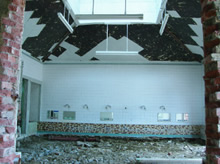
約40cmのレンガ壁に覆われていた浴室部分です。 昔、積上げたご苦労に心から敬意を、本当に感謝!
This is the bathroom area that was covered by a brick wall of about 40 cm. We really appreciate the hard work that went into piling it up all those years ago!
-
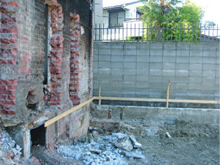
ボイラー室の撤去跡には、 大正時代の色々な面影が出てきました。
振りかえると、ココの部分は作り直すこことなっていたように思います。
Various vestiges of the Taisho Era (1912-1926) have been found in the ruins of the removed boiler room.
-
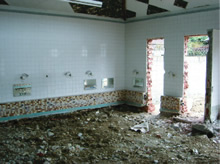
一番大変だった浴槽部分は、
ゆっくり・・壊しては考え。
The hardest part was the bathtub part...slowly...breaking and thinking, breaking and thinking over and over again.
-
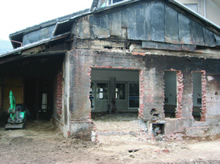
ボイラー室と燃料小屋を全て撤去。
撤去したものの・・・どう増築?悩み悩み。
The boiler room and fuel shed have all been removed. However, we had a hard time figuring out how to expand the building from now on.
-
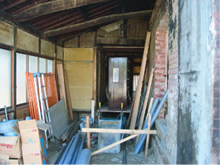
縁側の部分は、既存の躯体や土壁を残し
新しい空間作りへ。
The existing frame and mud walls of the porch were left in place to create a new space.
-
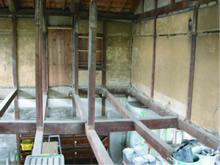
ニ階床部分は奥に20cmほど傾き、
ジャッキでちょっとちょっと調整。。
The second floor was tilted about 20 cm in the back, so we adjusted it a little bit with a jack.
-
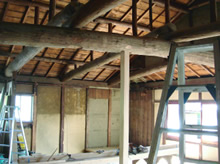
2階の天井を開くと、こんなにしっかりとした 「がらんぼう」で支えてくれてました。 最高の空間に仕上がりそう。
When we opened the ceiling of the second floor, we found a solid "garambo" supporting it. It will be the best space from now on. -

大正?昭和?時代に普通に貼ったタイルも、今こう見ると アートです。一枚一枚丁寧に手で 色の配色を考えながら貼られています。
Tiles pasted in the Taisho or Showa era, which were universal at the time, feel like art when viewed again today. Each tile is carefully placed by hand, with careful thought given to the color scheme.